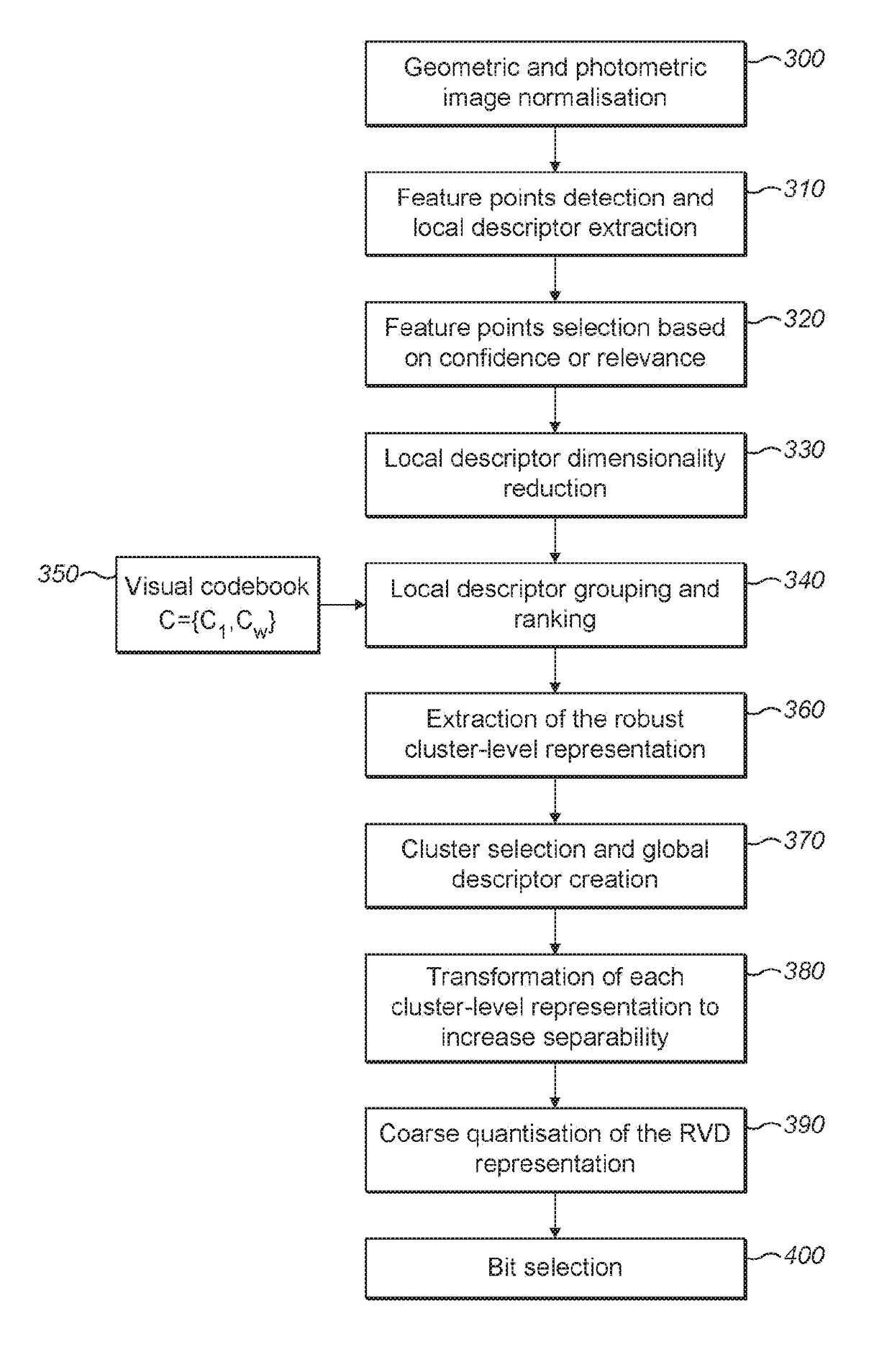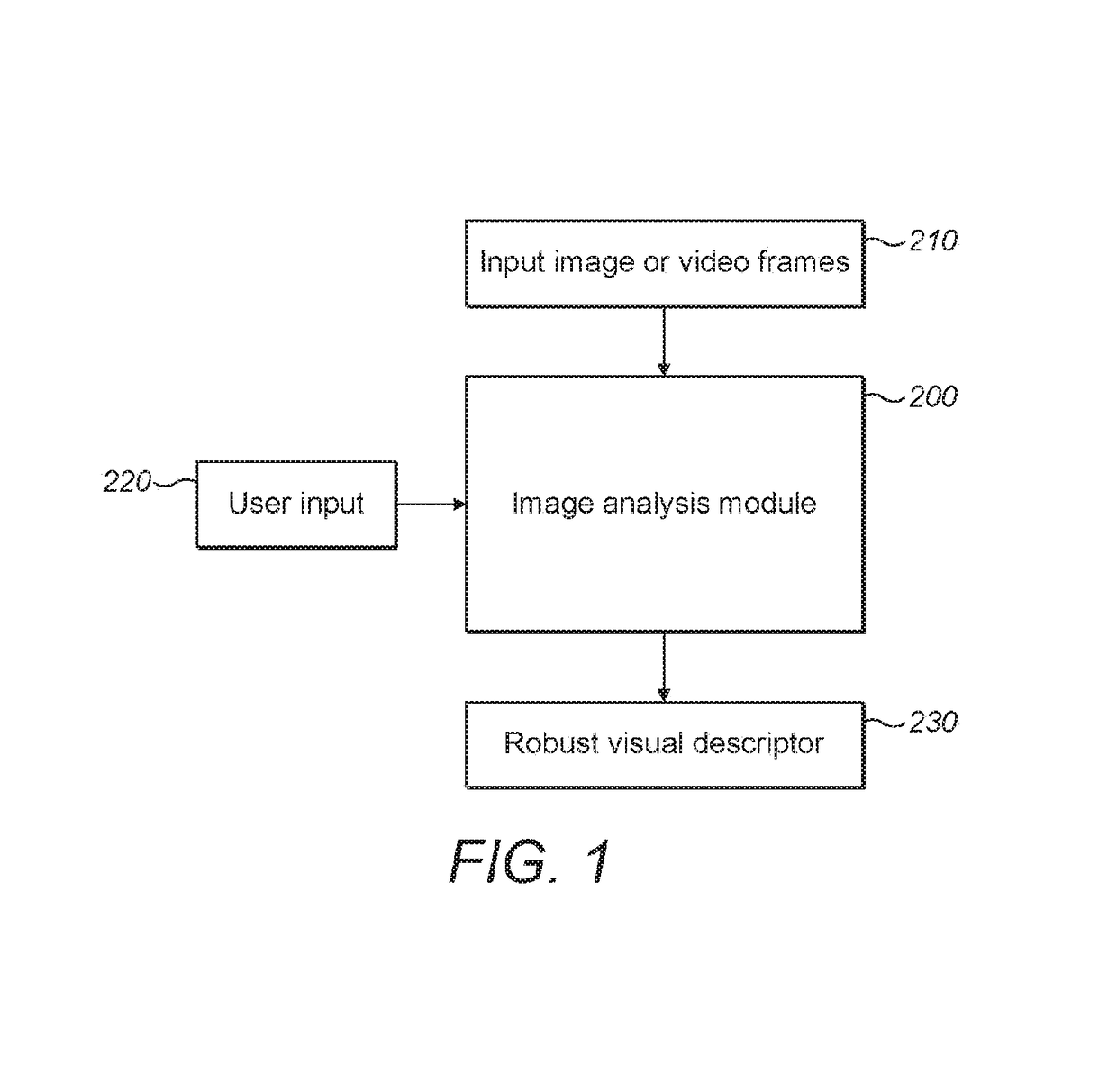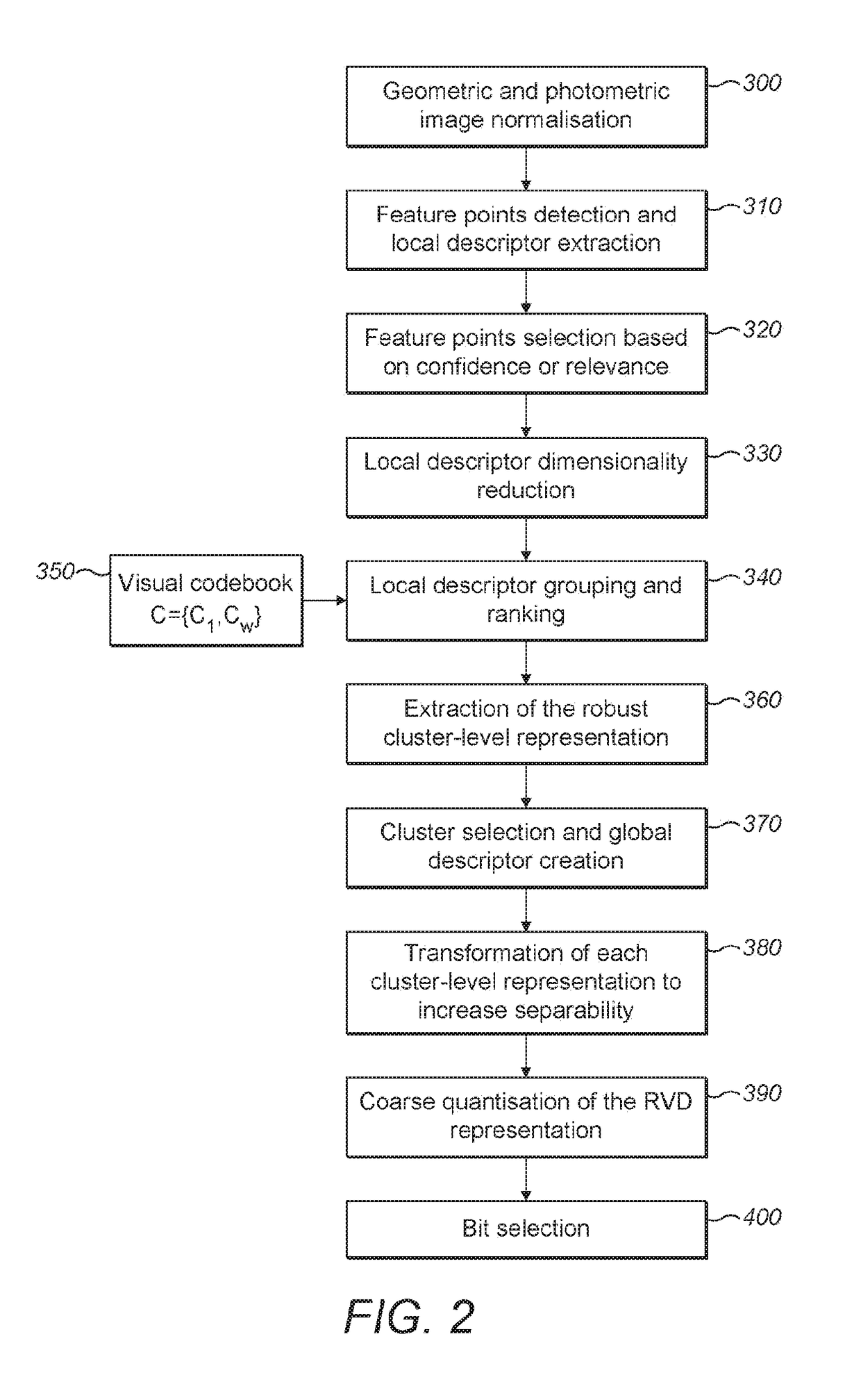Compact and robust signature for large scale visual search, retrieval and classification
a visual search, large-scale technology, applied in the direction of instruments, computing, electrical appliances, etc., can solve the problems of increasing the computational complexity of the search, and increasing the cost of the search. large, the effect of fast matching
- Summary
- Abstract
- Description
- Claims
- Application Information
AI Technical Summary
Benefits of technology
Problems solved by technology
Method used
Image
Examples
Embodiment Construction
[0028]Various embodiments for deriving a compact and robust representation of the content of images or video frames and for its use for the purpose of, for example, retrieval, recognition and classification are described below. For sake of simplicity in the description the term image will be used to mean images, video frames, visual objects or other similar representations or data.
[0029]The present invention is particularly useful for, but is not restricted to large scale visual search, image retrieval, image or visual object classification, etc.
[0030]In the initial stage of descriptor extraction, the image or video frames may be optionally pre-processed (block 300) by pre-filtering and normalized in size, for example the largest dimension of the image may be resized to 1024 pixels. Other photometric adjustments, such as contrast normalisation may be also applied.
[0031]In the next stage feature points are detected and described (block 310) using one of the prior art methods [8]. For...
PUM
 Login to View More
Login to View More Abstract
Description
Claims
Application Information
 Login to View More
Login to View More - R&D
- Intellectual Property
- Life Sciences
- Materials
- Tech Scout
- Unparalleled Data Quality
- Higher Quality Content
- 60% Fewer Hallucinations
Browse by: Latest US Patents, China's latest patents, Technical Efficacy Thesaurus, Application Domain, Technology Topic, Popular Technical Reports.
© 2025 PatSnap. All rights reserved.Legal|Privacy policy|Modern Slavery Act Transparency Statement|Sitemap|About US| Contact US: help@patsnap.com



